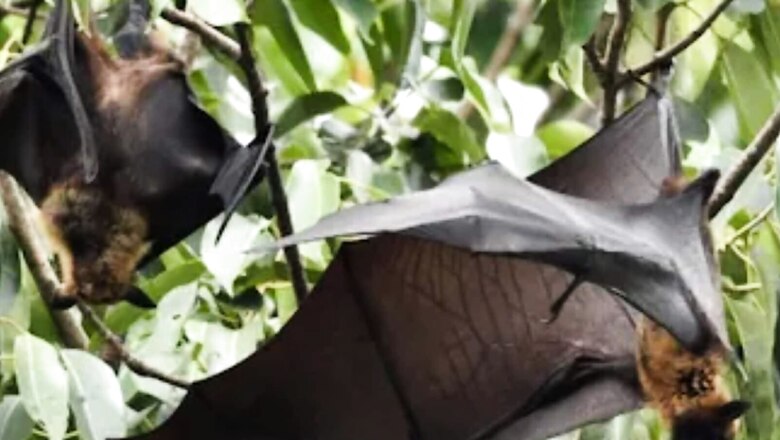
views
The world has seen how the novel coronavirus that jumped into humans wreaked an unprecedented havoc across countries in the last two years. Now, a new modelling study has estimated how the ongoing climate change could further raise the risk of such infectious diseases jumping from animals to humans in the coming years, especially in Southeast Asia.
According to the research published in Nature on Thursday, as many as 15,000 new cross-species viral transmissions are forecast to happen by 2070, especially in the tropical regions of Asia and Africa. As climate warms and land use patterns change, and deforestation continues, many animal species will be driven to new environments, taking their parasites and pathogens with them, and encountering other species with whom they never had any interactions previously.
“The coming decade will not only be hotter, but sicker too. No matter what simulation we do (temperature rise), we find that climate change is creating innumerable hotspots for emergence of infectious diseases,” says Dr Colin Carlson from Georgetown University. “We need to acknowledge these pandemic risks, and have health systems, which are ready to face them.”
The latest study reiterates what the scientists across the world have been warning all along — climate change could become the dominant driving force for increased risk of transmission of infectious diseases to humans, and goes ahead to identify hotspots and risk factors for these changes. Thousands of virus species are believed to have the capacity to infect humans.
At present, a vast majority of them are circulating silently in wild mammals. But, with shifts in their geographical range, there are increased chances of viral sharing between species that were once geographically isolated – and could now expose humans to these infections.
Species on the Move
Researchers from Washington’s Georgetown University studied how the geographical ranges of as many as 3,870 mammal species might change in response to different climate scenarios by 2070. They used a model of mammalian viral sharing patterns, and mapped the potential hotspots (where a species may or may not migrate to if warming continues) to make predictions about potential cross-species viral transmission in a subset of 3,139 animals.
“Novel encounters between mammal species are expected to occur everywhere in the world, but will be concentrated in areas of high human population density in tropical Africa and southeast Asia,” they noted. “Even in the best case scenario, geographic ranges (where a certain species can be found) are projected to shift a hundred kilometres or more in the next century, as species move miles to survive and keep pace with climate change.”
Most of these interactions will be driven predominantly by bats, which have a unique dispersal capacity, and are known to harbour viruses with a high chance of being transmissible to humans. Plus, their unique capacity for flight, considering that even non-migratory bats can regularly travel hundreds of kilometres within a lifetime, far exceeding what small mammals might be able to cover in 50 years. “Just as simian immunodeficiency virus making a host jump from monkeys to chimpanzees and gorillas facilitated the origins of HIV, or SARS-CoV spill over into civets perhaps allowed a bat virus to reach humans, these kinds of wildlife-to-wildlife host jumps may be evolutionary stepping stones for over 10,000 potentially zoonotic viruses that are currently circulating in mammal hosts,” the researchers noted.
Need Viral Surveillance of Wildlife Hosts
The findings press for an urgent need to step up viral surveillance along with discovery efforts and biodiversity surveys to track changes in geographical range of species, especially in high-elevation, species-rich tropical regions that are experiencing rapid warming. Scientists believe that targeting surveillance in future hotspots could help in identifying infectious diseases jumping between species.
In a world that has already passed +1°C of global warming, the team also believes that many of these interactions are already taking place, mostly beneath the surface. “But now it’s urgent that we start looking for them,” says Dr Gregory Albery from Georgetown University. “In the study, we identified the risk factors, pathways and potential future hotspots for viral sharing and emerging diseases. But the main message is this: This is happening, and we need to put measures in place for active surveillance of wild animals and their movement, and interactions with humans.”
The researchers further noted that spill over events such as SARS-Cov2 could probably be just the tip of the iceberg; by numbers alone, as most cross-species transmission events attributable to climate change will probably occur among wildlife hosts. “Our results highlight the urgency of better wildlife disease surveillance systems and public health infrastructure as a form of climate change adaptation,” they noted.
Read all the Latest India News here




















Comments
0 comment